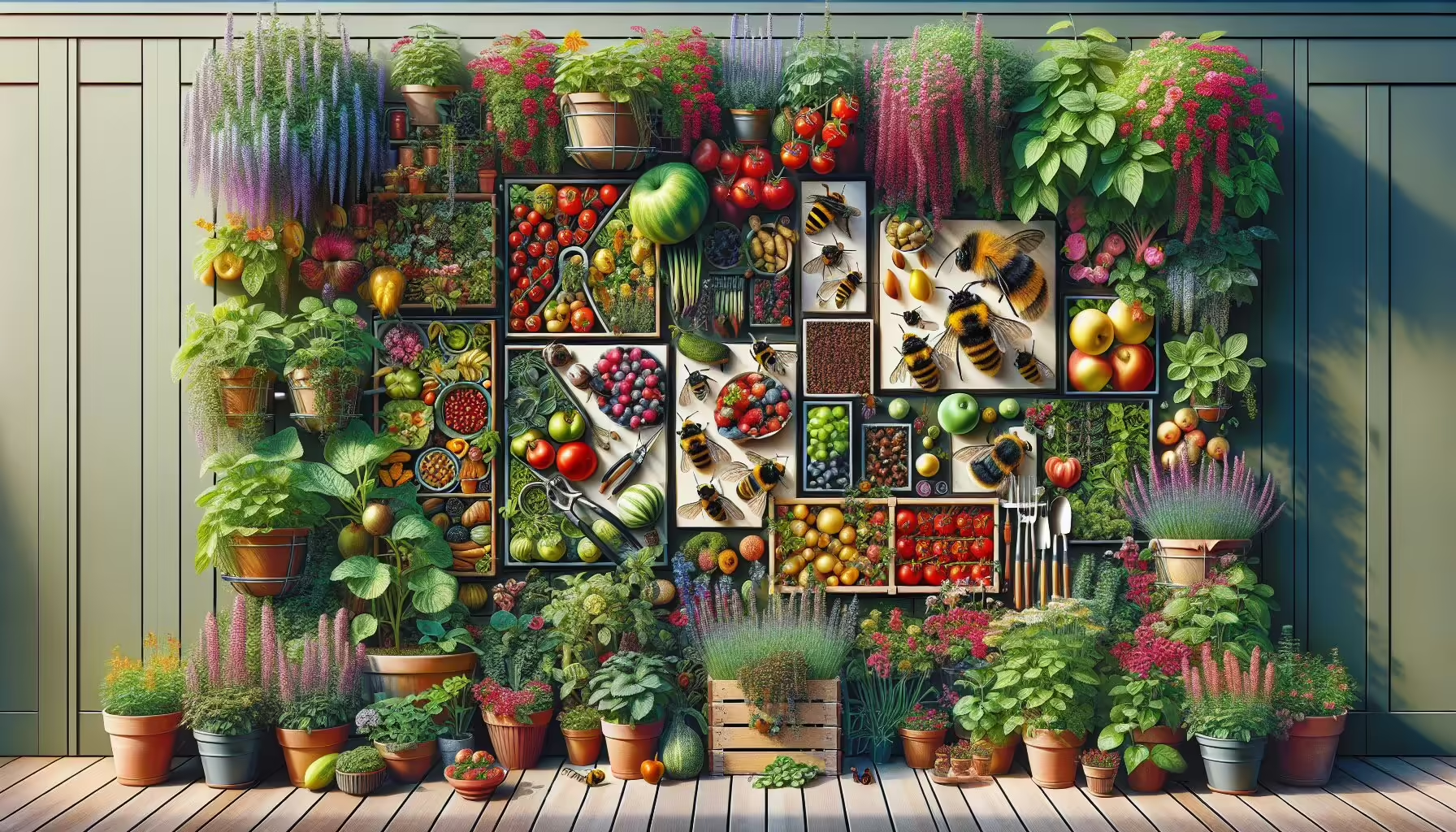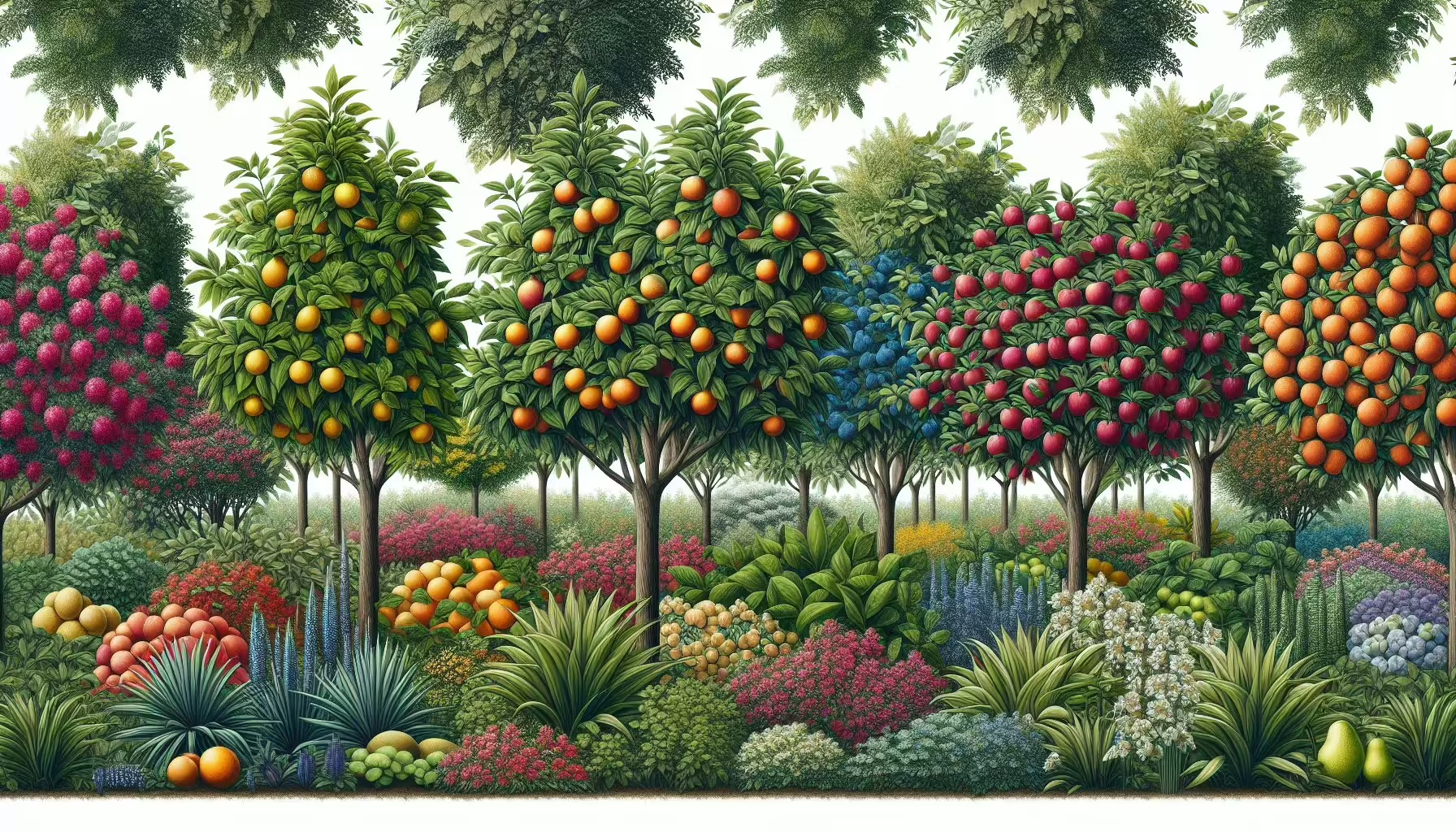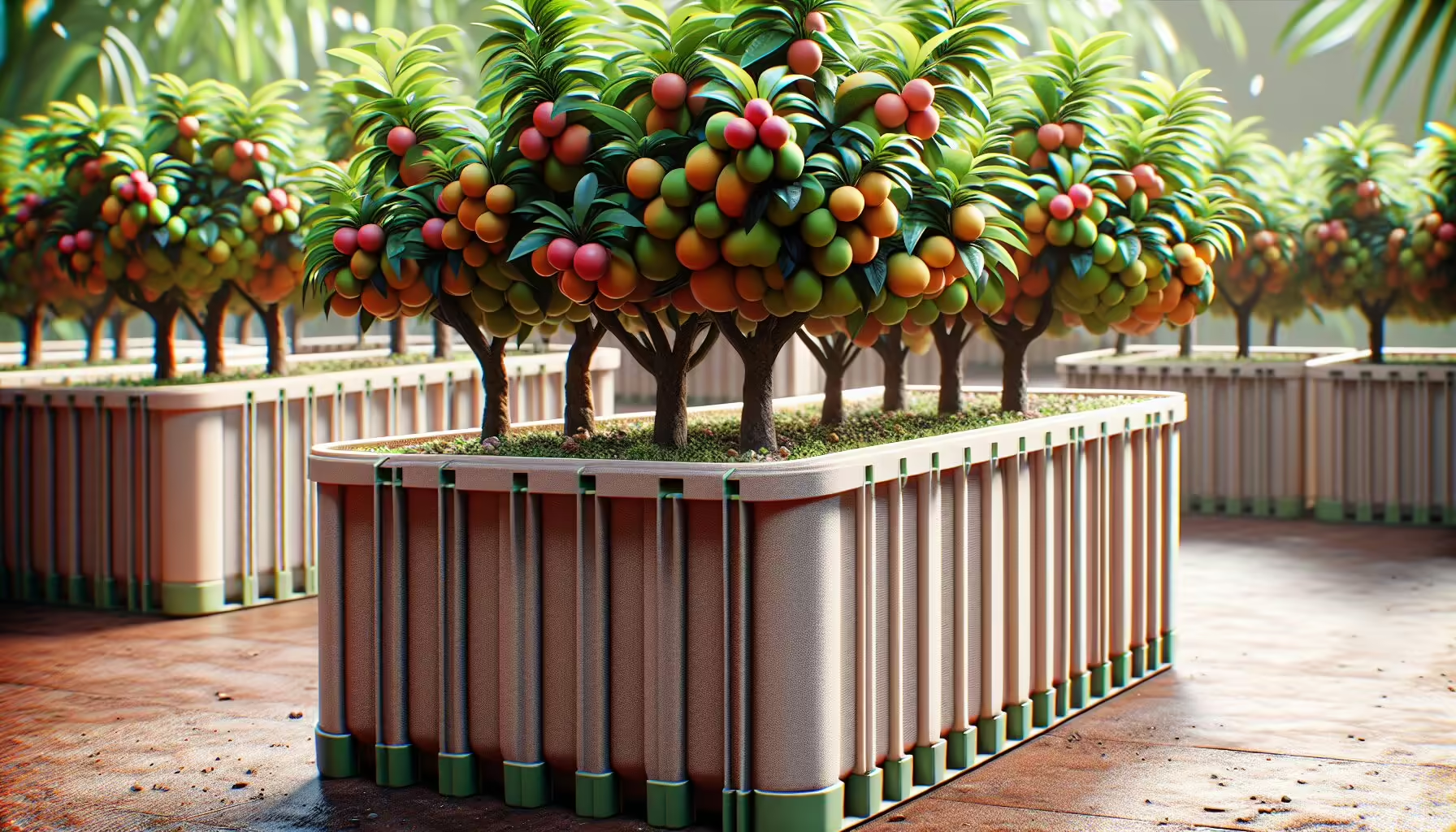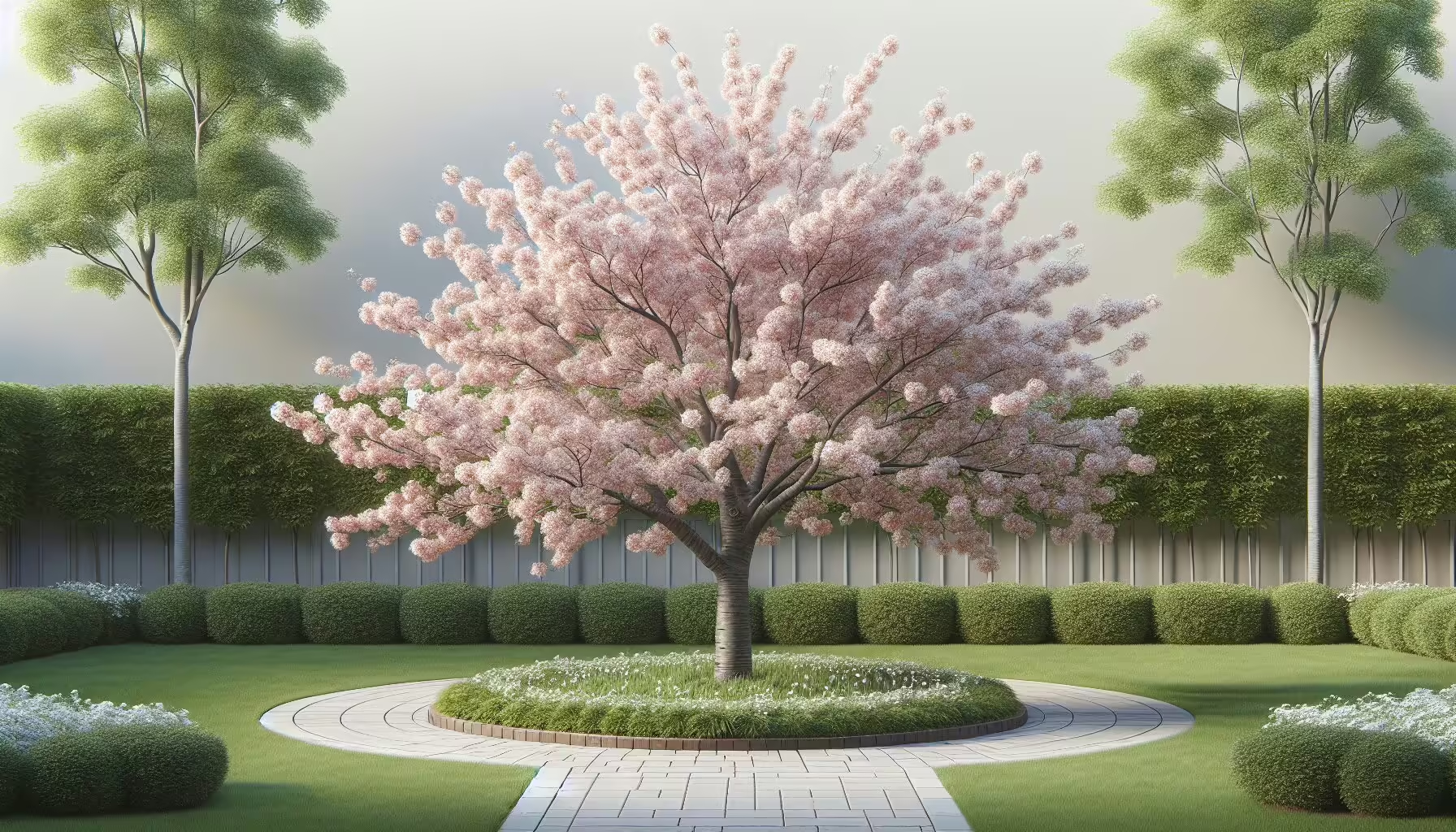Blossoming Balcony Bliss: Embracing Edible Pollinator Plants
My Journey with Pollinator Gardens
My Passion for Creating Pollinator-Friendly Spaces
It all began with a simple wish—I wanted more bees and butterflies flitting around my place. Who knew this would lead me to discover the pure joy of growing plants that provide a feast not just for the eyes or taste buds, but for buzzing and fluttering pals too? My balcony quickly turned into a haven for them—and a satisfying little project for me. This personal mission was not only about dressing up my space but making it a cozy home for those vital critters.
Through exhilarating research and, well, a fair bit of trial and error, I figured out how to throw in some tasty herbs and veggies amidst the flowers. Turns out, you can mix beauty and practicality and have a thriving garden that nourishes both soul and stomach. I got hooked on the idea of sustainable gardening, making my outdoor corner a little nature-friendly wonder.
Why Balcony Gardens Matter
In cities where every single plant counts, balcony gardens have their own kind of magic. My apartment balcony, tiny as it is, stands its ground as a mini refuge for bees, butterflies, and even some of those hard-to-love bugs that are quietly doing their job.
Starting a balcony garden means anyone can take a small step that echoes a big impact for the environment, even when floor space is a luxury. Toss in some edible plants, and you’ve got yourself a setup that not just looks nice but helps out Mother Nature, too. Plus, tending to my plants? Total mood booster. My little oasis perks up the air, fights off heat, and gives me a reason to pause and breathe amidst the city’s hustle-bustle.
My secret sauce? Zeroing in on balcony-friendly edible pollinator plants. Making the most of my space without turning it into a high-maintenance jungle was key. If you’re itching to start your own edible pollinator corner, you’re gonna want to peek at my handy guide on how to start an edible pollinator garden.
There’s something deeply rewarding about creating these green spaces. It’s a gentle reminder of the life thriving around us, prompting me to fold nature more into everyday moments. My balcony continues to transform, welcoming every winged friend seeking a pit stop. And I wouldn’t have it any other way.
Selecting Edible Pollinator Plants
Starting a buzzing little balcony garden full of edible pollinator plants is a joy many can embrace. After experimenting a bit, I’ve discovered that the right plants not only attract bees and butterflies but also bring smiles and possibly a fresh snack or two. Let me walk you through what I look for when I pick plants that fit nicely on my balcony and bring all these joys with them.
Criteria for Choosing Balcony-Friendly Plants
When I’m on the hunt for edible pollinator plants, here’s what I got in mind:
- Pollinators’ Favorite: I go for plants that call in the bees and butterflies like free ice cream at a summer fair.
- Size Matters: With the space I got, I need plants that grow up instead of out.
- Snack Approved: Plants that can spice up my kitchen game, whether it’s herbs or fruits, are always on the list.
- Easy-Peasy: I prefer low-maintenance plants since I’m sometimes a lazy gardener.
- All About Climate: I pick plants that can deal with the ups and downs of my local weather.
| Criteria | What to Look For |
|---|---|
| Pollinators’ Favorite | Choose plants bees and butterflies will love. |
| Size Matters | Find those that fit your space without taking over. |
| Snack Approved | Go for herbs, fruits, or vegetables for your meals. |
| Easy-Peasy | Opt for plants that don’t need too much fuss. |
| All About Climate | Select plants that match your local weather groove. |
Benefits of Edible Pollinator Plants
Adding these delightful plants to my balcony gives me more than just pretty flowers. Here’s the scoop on why I love them:
- More Critters and Creations: Different plants mean more buzzing buddies and a richer mini-ecosystem.
- Eye Candy: With bright blooms and greens, my balcony’s got its own cheerleader squad.
- Fresh Eats: Plucking a few leaves or fruits here and there really spices up my meals.
- Planet-Friendly: Lending a hand to pollinators helps the bigger picture more than you’d think.
- Relaxing Vibes: Digging in the dirt gives my mind a good rest and some connection to Mother Nature.
By knowing what to look for in plants that play nicely on a balcony and appreciating what they offer, I’ve carved out my own slice of paradise. Want to start your own edible pollinator garden? Check out my handy guide on how to start an edible pollinator garden.
Top Edible Pollinator Plants for Small Spaces
Putting together a lively and useful balcony garden can be a fun adventure, especially when I add edible pollinator plants. These plants do more than just look pretty or fill my plate—they bring in helpful bugs that make everything pop. Here are some great picks I lean towards.
Herbs for Pollinators and Culinary Delights
Herbs are perfect for tight spots since they do well in pots and spice up my cooking. Plus, bees and butterflies love them, which makes them ideal for a pollinator garden. Check out some herbs I really dig that help out in the kitchen and keep those pollinators buzzing.
| Herb | Pollinator Fan | Uses You’ll Love |
|---|---|---|
| Basil | Yup | Pesto, salads |
| Thyme | You bet | Soups, stews |
| Lavender | Definitely | Desserts, tea |
| Oregano | Sure thing | Italian goodies |
| Chives | Absolutely | Salads, garnishes |
| Mint | Of course | Teas, cocktails |
For more tasty herb ideas, check out my post on culinary herbs that double as pollinator magnets.
Small Fruits and Veggies for Pollinator Attraction
Alongside herbs, I’m all about popping in small fruits and veggies that lure in pollinators. They grow happily in pots and keep me stocked with fresh, home-grown goodness right from my balcony. Dig these cool picks:
| Fruit/Vegetable | Pollinator Fan | Pot Needs |
|---|---|---|
| Strawberries | Yes | 12-18 inches deep |
| Cherry Tomatoes | Yes | 14-18 inches deep |
| Peppers | Yes | 12-16 inches deep |
| Cucumbers | Yes | 18-24 inches deep (needs support) |
| Radishes | Yes | 10-12 inches deep |
These plants don’t just bring a mix to my garden—they’re also packed with good stuff and flavors for my meals. For tips on keeping your edible pollinator buddies in tip-top shape, take a look at my article on how to start an edible pollinator garden.
By mixing in these balcony-friendly edible pollinator plants, I’m shaping a vibrant spot that does wonders for me and the pollinators, who are truly the unsung heroes keeping our world turning.
Creating a Pollinator Paradise on Your Balcony
Whipping up a cozy hideout for pollinators on my balcony has been a blast! Mixing in some edible plants not only jazzes up the space but also rolls out the welcome mat for our buzzing buddies. Here’s how I cook up and care for my little green haven.
Designing a Balcony Pollinator Garden
When I’m setting up my balcony garden, I’m always thinking about space – gotta make every inch count. I love to get creative with containers and go vertical, stacking up layers of green goodness. Herbs, edible flowers, and small fruit plants are my best pals for this task. Here’s a quick table that breaks down my design vibe:
| Plant Type | Container Size | Best Spot |
|---|---|---|
| Herbs | 6-12 inches deep | Soakin’ up the sun |
| Edible Flowers | 12-18 inches wide | Hugging the railing |
| Small Fruits | 12-24 inches deep | Corners for balance |
My garden’s all about balcony-friendly edible pollinator plants that are not just eye-candy but practical too. Some nifty picks are edible flowers that attract butterflies and culinary herbs that double as pollinator magnets.
Tips for Maintaining Edible Pollinator Plants
Keeping my balcony garden in tip-top shape takes a bit of TLC. Here’s my secret sauce for making sure those edible pollinator plants stay in peak condition:
-
Water Wisely: Gotta give my plants just the right amount of water—more when it’s a scorcher, but without drowning them. Self-watering pots? They’re lifesavers for keeping everything nice and moist.
-
Soil Quality: Good dirt makes for happy plants. I swear by my soil preparation for edible pollinator gardens guide to boost those nutrients.
-
Pruning: Snipping my herbs and flowers on the reg helps them thrive. I dig into the best pruning techniques for edible pollinator plants to get the most blossoms and fruit.
-
Organic Pest Control: Pests? No biggie. I’m all about organic pest control in edible pollinator gardens to keep the critters away without messing with nature.
-
Seasonal Adjustments: Changing up my game with the seasons is a must. I stick to a seasonal planting guide for edible pollinator gardens to be spot-on with my plantings.
By rolling with these design and upkeep tricks, I create a buzzing oasis that attracts and feeds pollinators while throwing flavors from the garden to my kitchen. It’s pure joy seeing this little ecosystem groove along, heightening my love for cooking and the great outdoors.
Attracting and Nourishing Pollinators
Setting up a tiny paradise on my balcony isn’t just about pretty plants; it’s about inviting the right guests too—the buzzing and fluttering kind. I’ve come to understand how bees and butterflies aren’t just visitors, but VIPs in the grand shindig of my garden’s health and, honestly, the entire planet.
Importance of Bees and Butterflies
Let’s chat about our winged pals, bees and butterflies. They’re like the unsung heroes of pollination, zipping around and helping plants do their thing by shuffling pollen. Without these guys, loads of plants, even the ones putting yummy stuff on my table, would have a tough time making fruits or seeds. It hit me like a ton of bricks that bees alone are behind one-third of the chow I munch on.
By welcoming easy-to-grow pollinator plants on my balcony, I’m doing my bit to keep these little critters ticking. I’ve seen firsthand how a lively mix of flowers calls in different kinds of pollinators, which not only makes my garden thrive but also jazzes up the local environment.
Providing Water and Shelter for Pollinators
These pollinators aren’t just in it for the flowers—they need a drink and a cozy spot too. Here’s how I lend a hand:
| Need | Solution |
|---|---|
| Water | I set out a shallow dish of water, popping some rocks or marbles in there so our insect friends can sip without taking a swim. |
| Shelter | I let some garden spots go wild and plant native species, offering safe havens for native bees to hang their hats. |
Adding a simple water dish doesn’t just keep the insects hydrated—it makes my balcony garden even more charming. If you want more water tips, swing by my piece on water-wise edible pollinator garden design.
These tiny tweaks have not only invited more buzzing and fluttering but have made my garden bloom like never before. Seeing bees and butterflies relish the fruits of my efforts has given me a deeper love for nature’s dance. If you’re itching to kick off your own edible pollinator garden, peek at my article on how to start an edible pollinator garden.
Embracing the Beauty of Edible Pollinator Plants
Enjoying the Fruits of Your Labor
Tending to my garden up on the balcony, watching over tiny plants, there’s something truly magical about gathering the goodies I’ve grown with my own hands. The buzz and flutter of bees and butterflies—they’re not just visitors; they’re roommates. Plucking basil, cherry tomatoes, or strawberries, it’s pure joy that flavors my meals like nothing you can grab at the store.
Here’s a bit of what I’ve come to expect from my little garden lineup:
| Plant Type | Average Yield per Plant | Growth Duration |
|---|---|---|
| Basil | 0.5 – 1 lb | 60-90 days |
| Cherry Tomatoes | 10 – 20 lbs | 60-85 days |
| Strawberries | 1 – 2 lbs | 60-75 days |
| Oregano | 0.5 – 1 lb | 80-90 days |
Picking these fresh delights not only spices up my cooking but also makes my bee buddies happy. Every time I whip up something with these homegrown greens, I’m reminded of how close I feel to this green patch that teems with life.
Connecting with Nature through Pollinator Gardens
Building my little pollinator paradise has been like getting to know a fascinating book one day at a time. Watching the dance of bees over blossoms? Instant calm. This patch of green has been my go-to for a quick reset and a breath of fresh air.
Growing a mix of herbs, flowers, and veggies has let me see a small world take shape, buzzing with life and vibrant visitors. It’s more than just mealtime ingredients—it’s a small but mighty nod to keeping nature’s cycles going strong in my own backyard. People talk about helping bees and butterflies, but my garden shows it’s not just talk—it’s a feel-good way to make a difference, day by day.
If you’re itching to get your hands dirty and start this gratifying hobby, check out how to start an edible pollinator garden. Trust me, transforming a corner of your balcony into a buzzing little refuge is worth every minute spent.




Post Comment